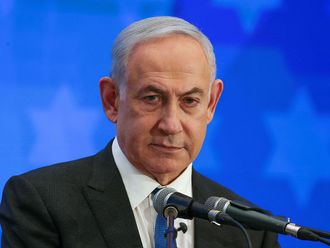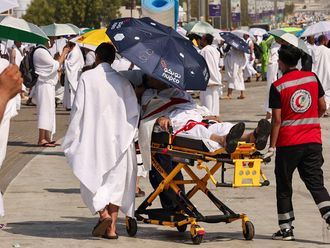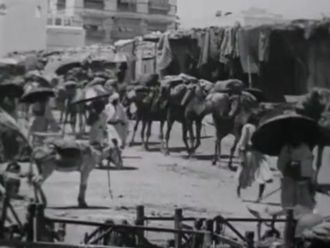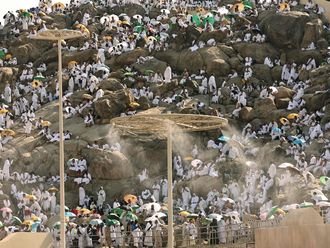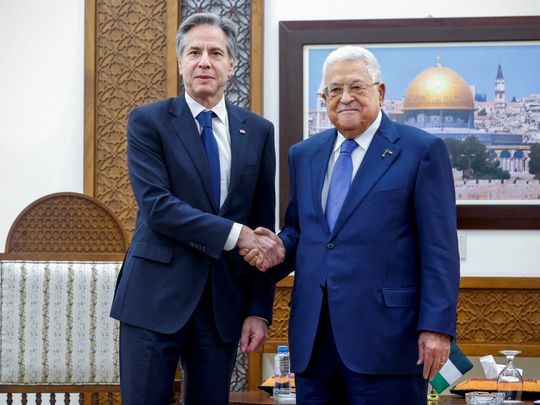
GAZA/RAMALLAH/DOHA: Israeli strikes in southern and central Gaza intensified on Wednesday despite a pledge by Israel that it would pull out some troops and shift to a more targeted campaign, and pleading from its ally Washington to kill fewer civilians.
Israel has said this week it is planning to begin drawing down troops, at least from the northern part of Gaza, after weeks of US pressure to scale down its operations and shift to what Washington says should be a more targeted campaign.
But the fighting appears to be as intense as ever, especially in the southern and central areas where Israeli forces launched ground advances last month.
In Rafah, on the southern edge of the enclave, relatives wept by the bodies of 15 members of the Nofal family laid out at a hospital morgue on Wednesday morning after their home was obliterated by an Israeli air strike overnight.
Most of the white shrouds were tiny, with children inside. A man partly opened one and caressed the face of a small boy with his hand. Relatives gently restrained another man who was wailing at the feet of the bodies.
At the site of the strike, where a huge crater had been blasted in the floor of a building, neighbours clambered through the ruins, strewn with bloodsoaked mattresses and broken toys.
Um Ayman Al Najjar, whose daughter and niece were killed, was bundled against the cold in the wreckage: “We woke up surrounded by all this rubble on top of our heads, hit after hit. I don’t know how we got out, stepping above things, blood shedding from us.” Israel has killed more than 23,000 Palestinians in Gaza since launching its campaign to eradicate the Hamas militant group that runs the enclave, after Hamas fighters killed 1,200 Israelis and captured 240 hostages in a rampage on October 7.
US Secretary of State Antony Blinken, on his fourth trip to the region since the war began, went to Ramallah on Wednesday and met Palestinian leaders, including Palestinian Authority (PA) President Mahmoud Abbas, in the Israeli-occupied West Bank.
The PA, which exercises limited self rule in the West Bank and accepts Israel’s right to exist, lost control of Gaza in 2007 to Hamas, which is sworn to Israel’s destruction.
The State Department said Blinken expressed support for a Palestinian state, discussed efforts to protect and aid civilians in Gaza, and encouraged “administrative reforms” of the PA. The PA said Abbas told Blinken no Palestinians should be displaced from Gaza or the West Bank.
Blinken has also met Israeli leaders and visited nearby Arab states, in search of a future settlement for the Gaza Strip and its 2.3 million residents.
Washington wants Israel to give the Ramallah-based PA a future role in governing Gaza; Israel, which says it wants control of Gaza’s security indefinitely, is reluctant. Blinken said on Tuesday that Israel “must be a partner to Palestinian leaders who are willing to lead their people living side by side in peace with Israel and as neighbours”.
Despite a public assertion by Israel since the New Year that it is scaling back the war, Gaza residents say they have seen no let-up. The northern half of the enclave is still off-limits, and the southern half has become a full-blown war zone in recent weeks. Nearly the entire population has been driven from their homes at least once, many displaced several times as Israeli forces advance.
Words written in butter
Um Ahmed, a mother of five from Gaza city now sheltering in a tent in Rafah, said Gazans had hoped Blinken’s visit meant they would be allowed to return to their homes.
“It is like words written in butter, it soon disappeared with the rise of the sun. That was the words of Blinken, fake,” she said.
Residents of Bureij, Nusseirat, and Maghazi in the central Gaza Strip reported intensive bombardment overnight, with Israeli tanks pushing deeper into Bureij and Maghazi.
In Nusseirat, a new wave of displacement was under way, a day after Israel dropped new warning leaflets for residents to leave and head west to Deir Al Balah. But Israel hit Deir Al Balah too, with the Palestinian Red Crescent releasing video showing ambulances bringing dead and wounded, including children, to a hospital.
Israel, still deeply shaken by the Hamas October 7 killing spree, says it will not stop fighting until it has eradicated the Islamist group and freed more than 100 hostages still held in Gaza.
Three months on, Tali Kizhner knelt and caressed the foot of a concrete wall inside a bomb shelter where her 22-year-old son Segev had tried to hide with dozens of other young people that fled from a music festival. The gunmen tossed in grenades and opened fire to kill them.
“I wanted to know where his last moments were, whether there was anywhere to hide. What happened there. To feel it,” she said.


